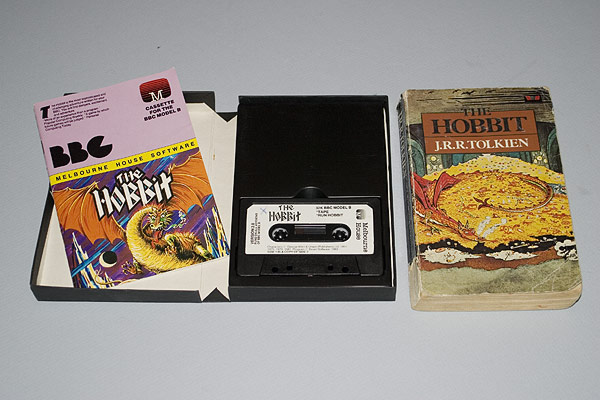About Retro-Kit
The Retro-Kit site is run be me, Paul Vernon. It's a site intended to describe my collection of Retro Kit which is predominantly based around the Acorn computers of the 1980's and early 90's.
How I came to use the Beeb
In 1983 I turned 9 years old and that was the year that the junior school that I attended introduced four, yes, four BBC Micro computers, the first of which was in May 1983 when I was still 8. The computers were housed on mobile workstations and shared between the classes. In fact, I distinctly remember an Assembly where we were instructed as to the use of SHIFT-BREAK to boot from floppy discs after Mr Anderson (my 3rd year teacher) fitted disc interfaces to all of the computers. He even let me take home school software to use over the odd weekend from time to time.
In my third year at Junior school, I read my copy of J.R.R. Tolkien's "The Hobbit" that was packaged with the Melbourne House game of the same name to Mr. Anderson and I remember him recounting the first time he read The Hobbit in one night as a student at University. As a ten year old, I didn't quite understand his enthusiasm about the book but Mr.Anderson, if you're reading this, I do now! In subsequent years, Mr. Anderson went on to be Head Master.

By September 1983, my parents realised that computing would play a major role in society in the future so, for my joint birthday/Christmas present that year (my birthday is about a week before Christmas), they invested in a BBC Micro Model B that I was to share with my older sister. Suffice to say, my sister wasn't interested in the Beeb and I took to it like a duck to water! For a more detailed history of the impact Acorn Computers had on me, you can read about the BBC Micro in my Education.
About the site
Without these computers, my parents encouragement and the BBC Computer Literacy Project, it is highly unlikely that I would be doing what I do today and as such, I owe my entire career to that little brown, beige and orange box called the BBC Micro that hails from Cambridge, UK. It's only right then that I have a little bit of space in my life to play with and maintain a handful of these computers that have brought me so much pleasure over the years and have ultimately enabled me to keep a roof over my head!
For those that are interested here's a breakdown of how I built the site and continue to maintain it.
Photography
All the photography of my retro kit was taken using the following cameras:
- Canon EOS D60 DSLR (until it broke)
- Canon EOS D400 DSLR
- Nokia N900 camera phone (until it broke)
- Nokia Lumia 800 (until it retired)
- Nokia Lumia 925 (until it retired)
- Microsoft Lumia 950 (until it retired)
- Samsung Galaxy S8
- Canon Powershot S50 compact digital camera (interim whilst I replaced my D60)
Screenshots
Screenshots from the Archimedes computers are attained using !Snapper and converted to GIF or PNG using !Creator. Screenshots for the BBC are taken using either my Canon DSLR (for speed) or by recording the BBC Micro's output using a Panasonic DMR-EH60 HDD and DVD recorder, burning the resulting recording to DVD and then grabbing screenshots from the DVD.
Video
Any video for the Amiga, Archimedes or BBC Micros is captured using the Panasonic HDD and DVD recorder, burnt to a DVD-RW disc and then ripped for digital editing. Any handheld video on the site is captured with either a Panasonic HD camcorder or my Nokia Lumia 800.
Site construction
The site is written in ColdFusion and Java and uses my businesses modular content management system NewMedia CMS to manage all the content on the site. Twitter integration is achieved using Twitter4J.
I hope you enjoy reading about my collection and its history.
Paul
Translate this site
Acorn Kit
Stairway to Hell posts
- 8 - bit acorn hardware • Re: New 128KB model B FLASH ROM dev
- other vintage hardware, software and languages • Re: BBC Engineering Training Department Introduction to Microprocessors Part 1
- acorn & bbc micro user group (abug) events • Re: ABUG SOUTH (in person) 18 to 20 March 2022 (Tables needed)
- acorn & bbc micro user group (abug) events • Re: ABUG SOUTH (in person) 18 to 20 March 2022 (Tables needed)
- programming • Re: Cascading lines
provided courtesy of Stardot STH forums
